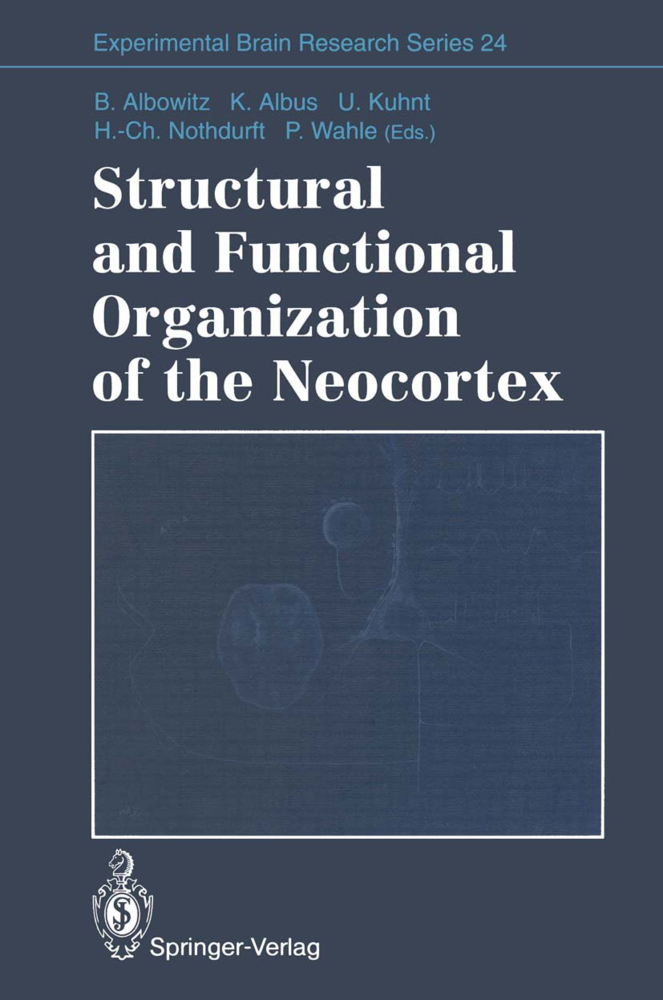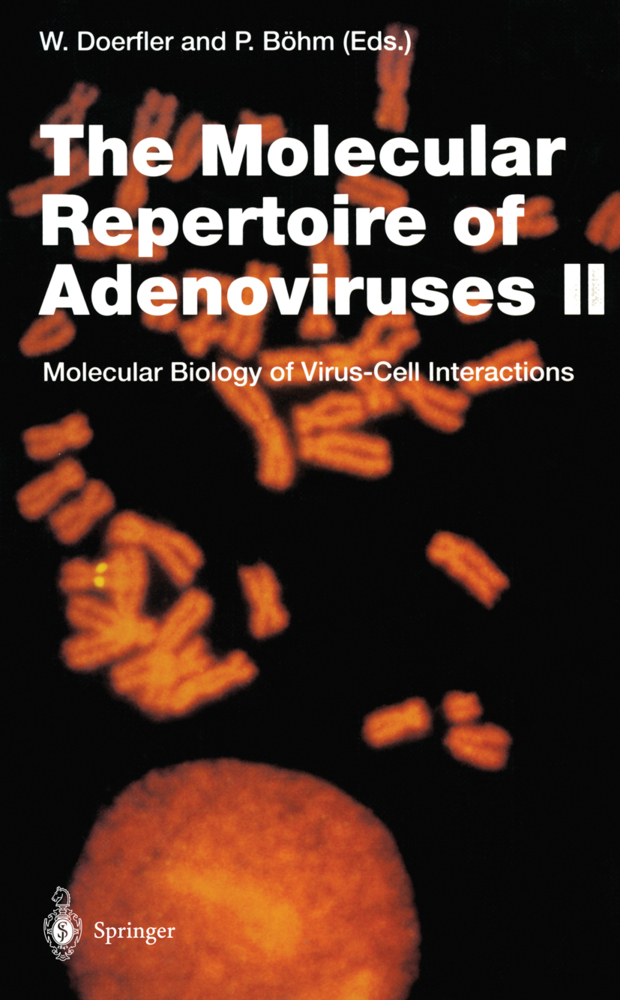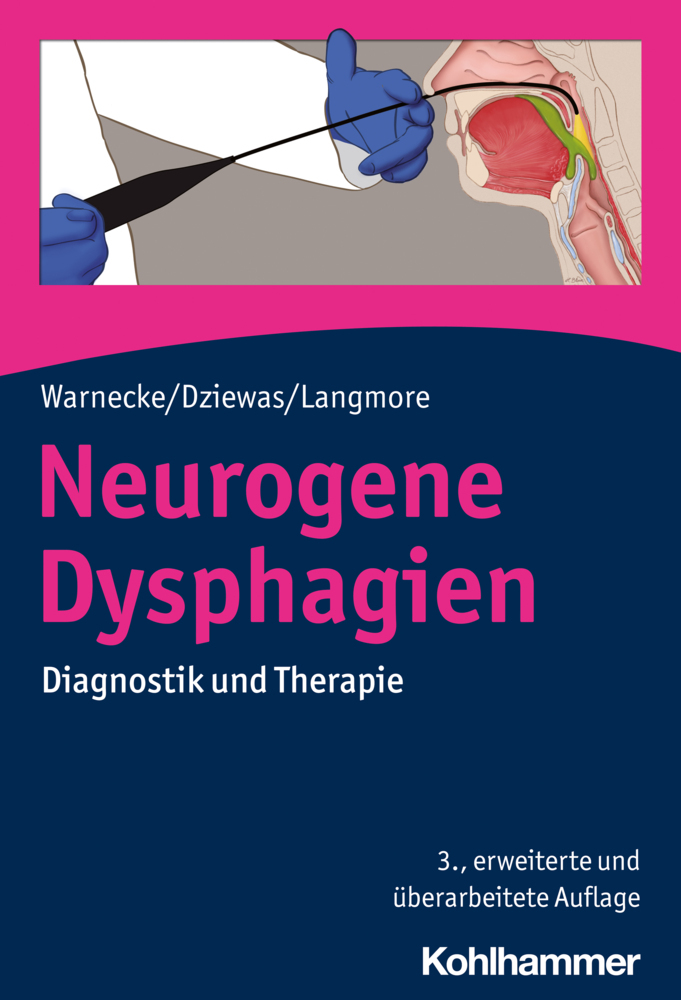Structural and Functional Organization of the Neocortex
Proceedings of a Symposium in the Memory of Otto D. Creutzfeldt, May 1993
Structural and Functional Organization of the Neocortex
Proceedings of a Symposium in the Memory of Otto D. Creutzfeldt, May 1993
On April 1, 1992, Otto Creutzfeldt would have celebrated his 65th birthday. About a year before, those of us who worked with him in the Department of Neurobiology decided to organize a meeting to honour Otto and his contri butions to neuroscience. Since Otto Creutzfeldt had no intention of retiring before his 67th birthday, this was not to be a "retirement conference" but a celebration on the occasion of a major anniversary. However. events turned out differently. In the spring of 1991, Otto Creutzfeldt became seriously ill, before we could consult with him on his suggestions for such a meeting, and we decided to postpone further dis cussion until his health improved. In the summer, when we talked to him about the meeting, he basically approved of the idea but immediately sug gested our turning it into a proper scientific congress, rather than limiting ourselves to inviting his friends and former co-workers. He had very good friends in many parts of the world and would certainly have liked to see many of them again. However, his interest in science remained the domi nant factor. He proposed the main topics for the conference and suggested several speakers to be invited. Although he knew that his health was crit ical and that his condition could rapidly worsen, we had the feeling that the planning gave him hope and perhaps an opportunity to look forward.
1.2 The Role of Pax Genes in Mammalian Development
1.3 Regulated and Nonregulated Parameters of Neocortical Cytogenesis
1.4 Cell Fate Determination and Cell Migration in the Developing Forebrain
1.5 Transient Neuronal Systems and Expression of Marker Molecules in the Developing Cerebral Cortex
2 Plasticity
2.1 Introduction
2.2 Computational Structure of Central Nervous System Axons Reflects Developmental Strategies
2.3 Neurochemical Properties of Cytochrome Oxidase-Rich Puffs and Interpuffs in Primate Visual Cortex: Regulation by Visual Input
2.4 Studies on Regulation of Ocular Dominance Plasticity: Strategies and Findings
2.5 Homosynaptic Long-Term Depression and Its Relationship to Long-Term Potentation in the Rat Neocortex In Vitro
3 On the Input to the Visual Cortex
3.1 Introduction
3.2 Color Coding in the Primate Retina: Predictions and Constraints from Anatomy
3.3 Ganglion Cells and Cortical Function
4 Microcircuitry I
4.1 Introduction
4.2 Dendritic Geometry of Pyramidal Neurons in the Visual Cortex of the Rat
4.3 The Canonical Microcircuit: A Co-operative Neuronal Network for Neocortex
4.4 Cellular Mechanisms of Thalamocortical Oscillations
4.5 The Order in Synaptic Circuits of the Cerebral Cortex: Lessons from the Hippocampus
4.6 Constraints to a Random Plan of Cortical Connectivity
5 Microcircuitry II
5.1 Introduction
5.2 Layer I and the Excitable Apical Dendrite: Substrates for Intracortical Communication
5.3 Spatiotemporal Activity Patterns in the Neocortical Slice: Fast Optical Recordings with Voltage-Sensitive Dyes
5.4 The Linearity of Synaptic Mechanisms in Simple Cells of Area 17 of Cat Visual Cortex
5.5 Widespread Horizontal Interactions in Kitten Visual Cortex and Their Shrinkage with Development
5.6 Large Basket Cells and Lateral Inhibition in Cat Visual Cortex
6 Plasticity -Memory -Attention
6.1 Introduction
6.2 Circuitry and Functional Dynamics of Adult Visual Cortex
6.3 Plasticity of Sensory Maps in Adult Mammals
6.4 Mapping of Stimulus Features and Meaning in Gerbil Auditory Cortex
6.5 Cortical Mechanisms for Voluntary and Involuntary Attention: Posterior Cingulate and Lateral Intraparietal Areas in the Monkey
6.6 Neural Mechanisms for Memory-Guided Visual Search
7 Functional Aspects I
7.1 Introduction
7.2 Functional Architecture and Connection Rules in Primary Visual Cortex of Macaque Monkey
7.3 The Organization, Connectivity and Interactions of Color Processing in the Visual Cortex
7.4 Anatomical, Physiological, and Computational Aspects of Hierarchical Processing in the Macaque Visual Cortex
7.5 On the Putative Role in Synchrony in Cortical Processing
7.6 Sensory-Motor Integration and the Posterior Parietal Cortex
7.7 Comparative Physiological and Anatomical Studies of the Primate Vestibular Cortex
8 Functional Aspects II
8.1 Introduction
8.2 Cortical Properties of Preattentive Vision
8.3 Structural and Functional Organization of Connections between Neocortex and Midbrain
8.4 The Visual Guidance of Saccades
8.5 Callosal Pathways for Simple Visuomotor Control in Man
8.6 Distributed Processing of Movement Dynamics and Kinematics in the Three Motor Cortical Areas of the Rhesus Monkey
9 Human Cerebral Cortex
9.1 Introduction
9.2 Cerebral Subsystems Within Language
9.3 Human Left Temporal Neural Mechamisms for Recent Verbal Memory
9.4 Verbal and Visual Thinking in the EEG
9.5 Magnetoencephalography: A New Window into the Functional Organization of the Cerebral Cortex.-9.6 Electroencephalography in Psychiatry: From Hans Berger to the "Decade of the Brain"
9.7 The Frontal Lobe and the Essentials of Homo Sapiens.
1 Development
1.1 Introduction1.2 The Role of Pax Genes in Mammalian Development
1.3 Regulated and Nonregulated Parameters of Neocortical Cytogenesis
1.4 Cell Fate Determination and Cell Migration in the Developing Forebrain
1.5 Transient Neuronal Systems and Expression of Marker Molecules in the Developing Cerebral Cortex
2 Plasticity
2.1 Introduction
2.2 Computational Structure of Central Nervous System Axons Reflects Developmental Strategies
2.3 Neurochemical Properties of Cytochrome Oxidase-Rich Puffs and Interpuffs in Primate Visual Cortex: Regulation by Visual Input
2.4 Studies on Regulation of Ocular Dominance Plasticity: Strategies and Findings
2.5 Homosynaptic Long-Term Depression and Its Relationship to Long-Term Potentation in the Rat Neocortex In Vitro
3 On the Input to the Visual Cortex
3.1 Introduction
3.2 Color Coding in the Primate Retina: Predictions and Constraints from Anatomy
3.3 Ganglion Cells and Cortical Function
4 Microcircuitry I
4.1 Introduction
4.2 Dendritic Geometry of Pyramidal Neurons in the Visual Cortex of the Rat
4.3 The Canonical Microcircuit: A Co-operative Neuronal Network for Neocortex
4.4 Cellular Mechanisms of Thalamocortical Oscillations
4.5 The Order in Synaptic Circuits of the Cerebral Cortex: Lessons from the Hippocampus
4.6 Constraints to a Random Plan of Cortical Connectivity
5 Microcircuitry II
5.1 Introduction
5.2 Layer I and the Excitable Apical Dendrite: Substrates for Intracortical Communication
5.3 Spatiotemporal Activity Patterns in the Neocortical Slice: Fast Optical Recordings with Voltage-Sensitive Dyes
5.4 The Linearity of Synaptic Mechanisms in Simple Cells of Area 17 of Cat Visual Cortex
5.5 Widespread Horizontal Interactions in Kitten Visual Cortex and Their Shrinkage with Development
5.6 Large Basket Cells and Lateral Inhibition in Cat Visual Cortex
6 Plasticity -Memory -Attention
6.1 Introduction
6.2 Circuitry and Functional Dynamics of Adult Visual Cortex
6.3 Plasticity of Sensory Maps in Adult Mammals
6.4 Mapping of Stimulus Features and Meaning in Gerbil Auditory Cortex
6.5 Cortical Mechanisms for Voluntary and Involuntary Attention: Posterior Cingulate and Lateral Intraparietal Areas in the Monkey
6.6 Neural Mechanisms for Memory-Guided Visual Search
7 Functional Aspects I
7.1 Introduction
7.2 Functional Architecture and Connection Rules in Primary Visual Cortex of Macaque Monkey
7.3 The Organization, Connectivity and Interactions of Color Processing in the Visual Cortex
7.4 Anatomical, Physiological, and Computational Aspects of Hierarchical Processing in the Macaque Visual Cortex
7.5 On the Putative Role in Synchrony in Cortical Processing
7.6 Sensory-Motor Integration and the Posterior Parietal Cortex
7.7 Comparative Physiological and Anatomical Studies of the Primate Vestibular Cortex
8 Functional Aspects II
8.1 Introduction
8.2 Cortical Properties of Preattentive Vision
8.3 Structural and Functional Organization of Connections between Neocortex and Midbrain
8.4 The Visual Guidance of Saccades
8.5 Callosal Pathways for Simple Visuomotor Control in Man
8.6 Distributed Processing of Movement Dynamics and Kinematics in the Three Motor Cortical Areas of the Rhesus Monkey
9 Human Cerebral Cortex
9.1 Introduction
9.2 Cerebral Subsystems Within Language
9.3 Human Left Temporal Neural Mechamisms for Recent Verbal Memory
9.4 Verbal and Visual Thinking in the EEG
9.5 Magnetoencephalography: A New Window into the Functional Organization of the Cerebral Cortex.-9.6 Electroencephalography in Psychiatry: From Hans Berger to the "Decade of the Brain"
9.7 The Frontal Lobe and the Essentials of Homo Sapiens.
Albowitz, Birgit
Albus, Klaus
Kuhnt, Ulrich
Nothdurft, Hans-Christoph
Wahle, Petra
| ISBN | 978-3-642-78501-6 |
|---|---|
| Artikelnummer | 9783642785016 |
| Medientyp | Buch |
| Copyrightjahr | 2011 |
| Verlag | Springer, Berlin |
| Umfang | XXV, 476 Seiten |
| Abbildungen | XXV, 476 p. |
| Sprache | Englisch |









